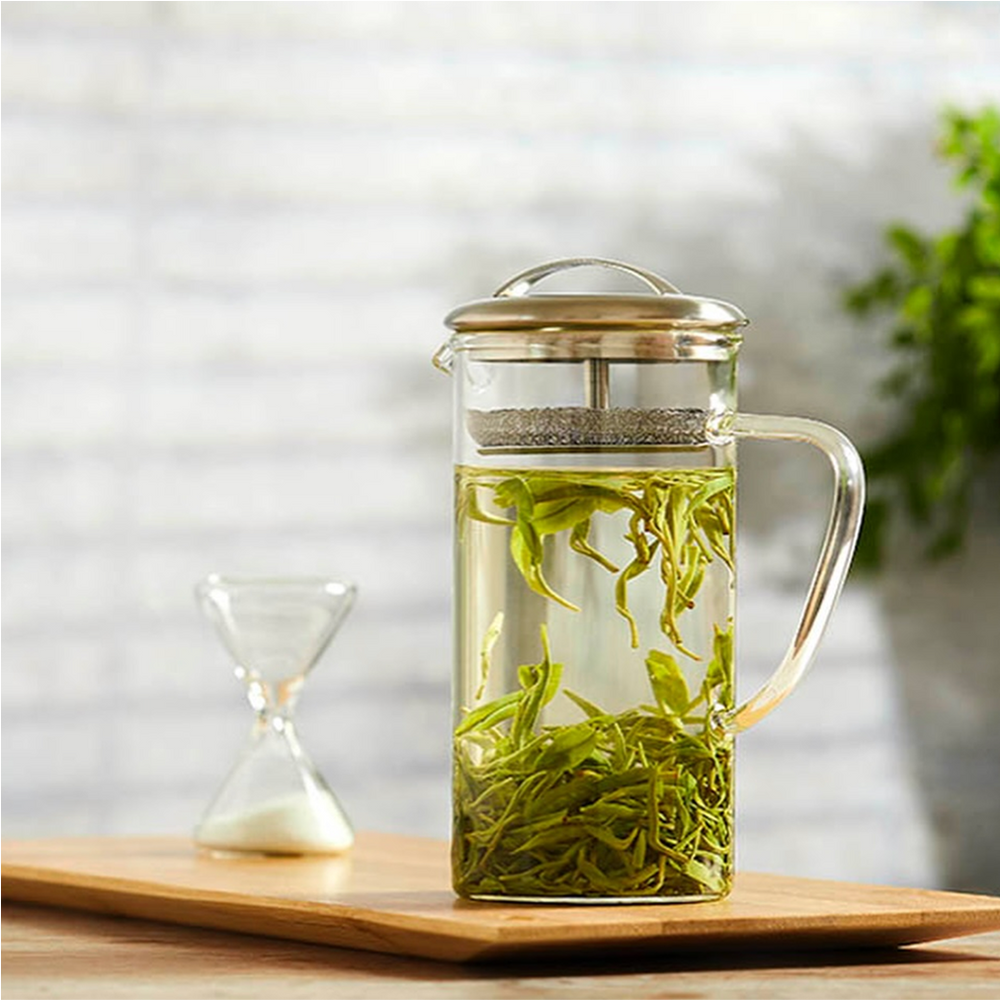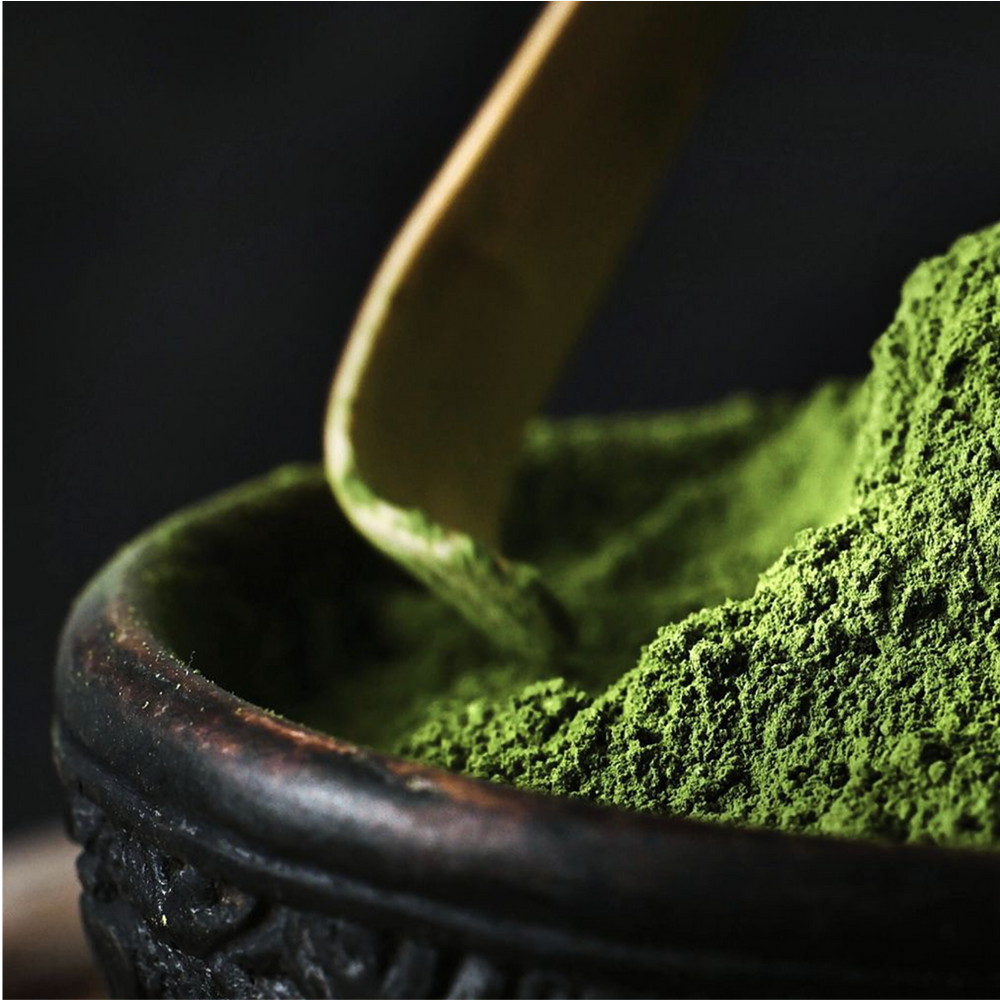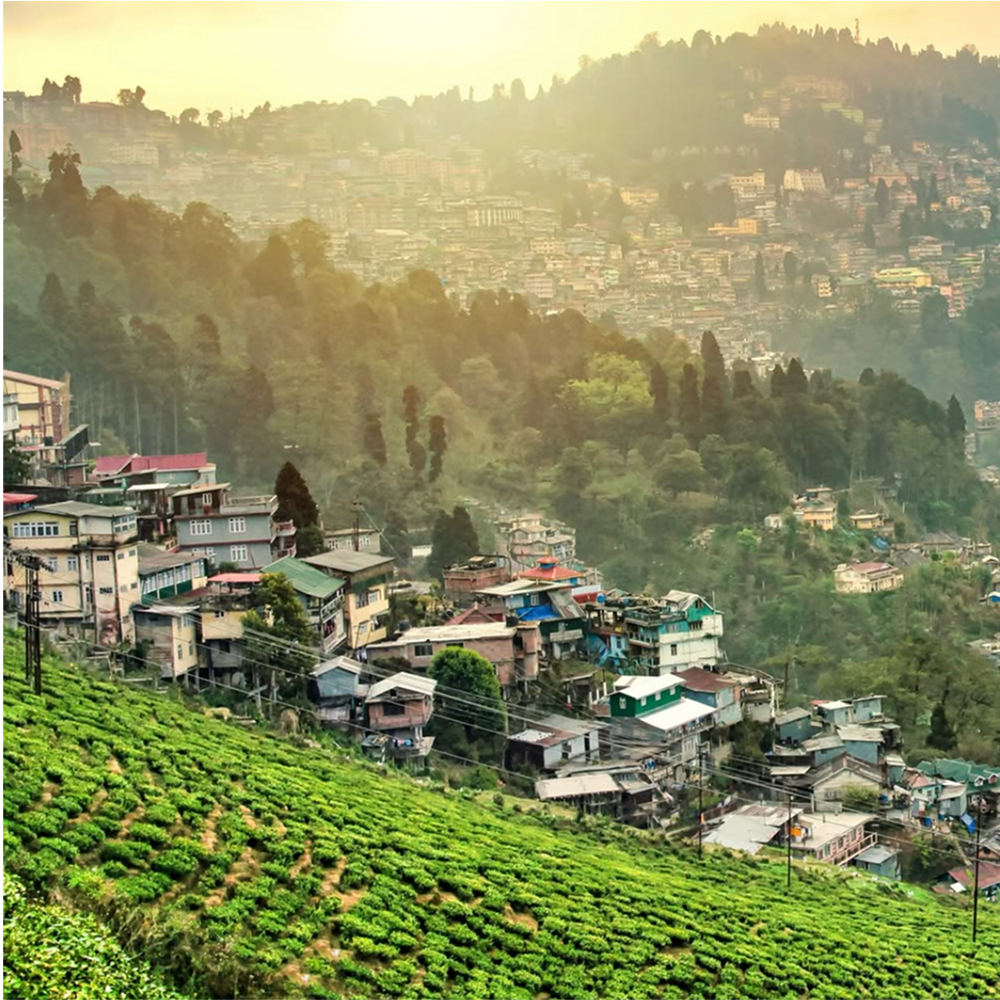Matcha, a revered powdered green tea from Japan, has been cherished for centuries, particularly in the 'Chadō' or matcha tea ceremony practised by Buddhist monks. Its popularity today not only comes from its rich history but also from its unique taste and health benefits.
So, what does matcha tea taste like? When whisked with water, matcha transforms into a vibrant, fragrant green tea with a smooth texture. It offers an umami flavour, balanced by a complex, grassy sweetness and a lasting, slightly bitter aftertaste. This distinctive taste is a result of the process used to create matcha - shading, hand-picking, and stone-milling the leaves to produce a fine, vibrant green powder.
Beyond its flavour, Organic Matcha Ceremonial Grade is celebrated for its high levels of L-Theanine and caffeine. Together, these compounds help create a state of calm focus, a quality that Buddhist monks historically used to enhance their long meditation sessions. Matcha is not just a drink, it's an experience - vibrant, fresh, and bursting with floral aromas, a thick creamy texture, and a perfect balance of sweetness and deep umami.
Matcha Tea - How It Should Taste and What To Look For
Grades:
Matcha comes in various grades, from ceremonial to latte grade and culinary grade. If you’re new to matcha, we recommend starting with ceremonial grades, as these typically offer the highest quality and the most authentic matcha experience.
Colour:
Matcha's colour is indicative of its quality and freshness. The best Matcha should be a vivid green, almost luminous, and very bright. Watch out for any matcha that has gone stale yellow or even oxidised brown, as these are signs it will not taste good at all.
Texture:
The texture of matcha is another key quality indicator. The finest matcha is stone-milled over several hours until it reaches an ultra-fine consistency. This fine texture ensures a smooth, velvety mouthfeel when the matcha is whisked into water.
Origin:
The best matcha comes from Japan, particularly regions known for their tea cultivation. The origin and cultivar of matcha can greatly influence its flavour profile. For example, our JING Organic Matcha is produced in Kirishima, located in the far south of Japan on Kyushu Island. Grown at an altitude of 450 metres and nourished by the fertile soils surrounding the Sakurajima volcano, this matcha is made from the Okumidori cultivar, known for its high floral notes and deep, vegetal umami.
Organic:
Given that matcha involves consuming the entire tea leaf in powdered form, opting for organic matcha is crucial. Organic matcha ensures that your tea is grown without the use of synthetic pesticides, offering a purer, more natural flavour. However, finding high-quality organic matcha can be challenging due to the high levels of pesticide use in Japan’s tea-growing regions. We recommend seeking out matcha that is both delicious and certified organic for the best experience.
How Does Matcha Get Its Taste?
Although matcha is now predominantly crafted in Japan, its origins trace back to China. In the 8th century, the Chinese produced steamed green tea that was pressed into bricks for storage. When ready to drink, the tea was powdered and whisked into a bowl, much like modern matcha. The Japanese refined this process over time, creating the vibrant matcha we enjoy today.
Each spring, tea leaves are carefully shaded, hand-picked, and stone-milled to produce matcha. The shading process, which involves covering the tea bushes with a dark canopy for about a month before harvest, is crucial. It blocks sunlight, encouraging the leaves to produce more chlorophyll and umami-rich amino acids, which contribute to matcha's deep, rich flavour and vibrant green colour.
Once harvested, the leaves are steamed to preserve their fresh, green state and prevent oxidation. The result is a finely ground powder with a smooth texture and a flavour that is both complex and satisfying.
Tools To Make Matcha Tea
- To prepare matcha, you’ll need a few essential tools, available in various forms:
- Matcha Shaker: For a quick and easy preparation.
- Handmade Ceremonial Matcha Bowl: For a traditional matcha experience.
- Bamboo Chasen Matcha Whisk: Essential for whisking matcha to the perfect consistency.
- Modern Matcha Gift Set: A complete kit for the matcha enthusiast.
Whether you choose to prepare your matcha the traditional way with a whisk and bowl or prefer the convenience of a modern shaker, the right tools will help you enjoy the full flavour and experience of matcha.
Start Your Matcha Journey With JING
Explore the vibrant world of matcha, and discover a tea that is as rich in history as it is in flavour. Whether you're seeking calm focus or a new culinary adventure, matcha offers a unique and rewarding experience.




